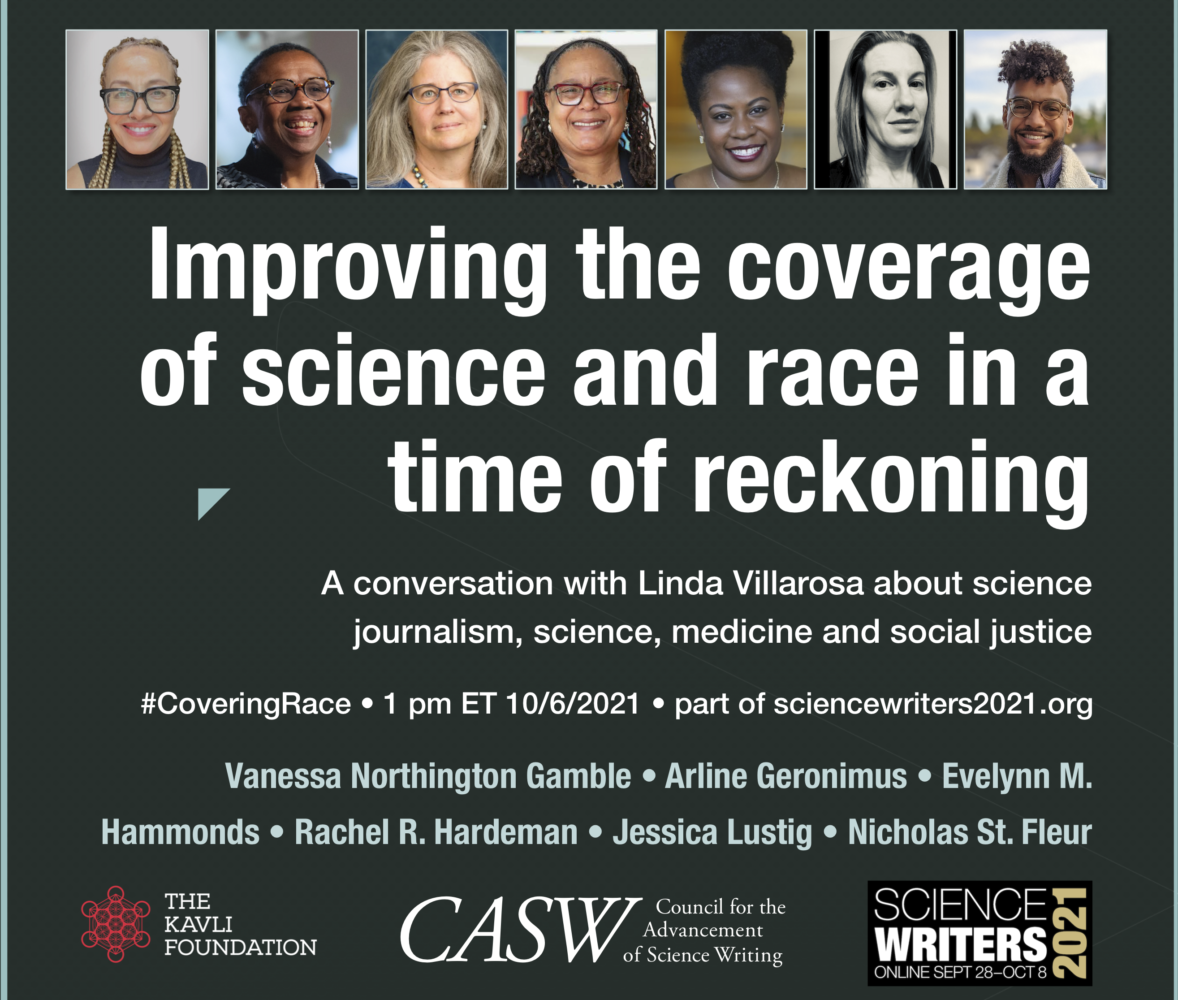
Workshop attendees focus on responsible reporting on Indigenous science and race in biomedicine
What baggage do the words race, ancestry, and ethnicity carry in biomedical research today? How can traditional science journalism incorporate and respect Indigenous knowledge about climate and environment?
These questions were the focus of a pair of discussion groups organized by CASW at the ScienceWriters2021 conference on October 6 as part of a workshop on science journalists’ responsibilities and values, “Science journalism meets social justice,” presented with support from the Kavli Foundation. The discussion groups brought science writers and scientists together to consider how journalists might do a better job of investigating and reporting on topics at the intersection of race and science.
The workshop kicked off with a riveting discussion of Black maternal and infant mortality—and how a journalist brought the crisis to her audience through reporting and writing of extraordinary depth and power. The session featured journalist Linda Villanova, her New York Times Magazine editor, and scholars who study the effects of racism and sexism on health and health care. A video recording of the opening session is available.
The followup discussions were:
Race in biomedicine
Freelance journalist Jyoti Madhusoodanan shared her reporting on “race corrections”—algorithms that enable clinicians to adjust medical treatments based on results of studies that consider a patient’s race as a variable. Newer research has shown that such corrections often lead to inappropriate treatment or the withholding of needed treatment. Ethics and genomics scholars Daphne O. Martschenko of Stanford University and Alice Popejoy of the University of California, Davis described the many errors made by studies applying race, ancestry, and ethnicity labels to genetic and genomic data. These concepts are culturally rather than scientifically constructed, Popejoy emphasized, and applied inappropriately and inconsistently over the history of genetic research.
Science writers in the group said they were challenged in covering studies that include race, ancestry, and ethnicity as parameters, given the inconsistent definitions of these terms and the perils of reinforcing stereotypes. They called for more discussion of ways to interrogate scientists and studies when reporting. A follow-up discussion is being planned.
Reporting on Indigenous climate science
Scientists working in some areas of environmental and climate science are increasingly seeking out collaborations with Indigenous communities, whose traditions and practices often embody deep and distinctive ways of knowing and living with the natural world. A second discussion group was led by Paulette Blanchard and Julie Maldonado of the University of California, Santa Barbara, who have worked together on organizing Rising Voices workshops that bring earth scientists and Indigenous scientists together for sharing knowledge about climate resilience. Blanchard (absentee Shawnee/Kickapoo) is a geography Ph.D. candidate at the University of Kansas, and Maldonado is an anthropologist focused on climate change and adaptation.
Blanchard has developed a set of principles to guide how researchers work with Indigenous communities, and the discussion participants agreed that reporters would do well to follow the same principles: respect, relevance, reciprocity, responsibility, relatedness, relationships, and redistribution. The purpose of a journalist’s interaction with an Indigenous community should not be extractive and only of value to the journalist and audience, they said. The relationship must be two-way, with a commitment to use shared knowledge in responsible ways and find appropriate ways to give back. The group recommended that journalists think of their work as conversational and relational rather than extractive and transactional.